Understanding Remote Patient Monitoring: CMS Regulations for 2025
Remote patient monitoring (RPM) is becoming a transformative force for patient with chronic conditions and allows providers to remotely monitor a patient's health data from the comfort of their home. With access to real-time data, they can have quick intervention, medication adjustments, and improves the level of care. The Centers for Medicare & Medicaid Services (CMS) recognizes this immense value and establishes a clear guidelines and reimbursement pathways; and have helped practices across the United States to adopt this life-changing technology. In this blog let us break down everything from what is RPM, how to successfully implement an RPM program, from understanding the rules to mastering medical billing and getting higher reimbursements.
What is Remote Patient Monitoring?
Remote Patient Monitoring means collecting vitals and other health data using digital devices from patients in one location and electronically transmit that information securely to the healthcare provider in a different location through a cloud-based environment for assessment and recommendations.
According to CMS remote patient monitoring must be carried out using FDA-defined medical devices that automatically transmit physiological data (like blood pressure, oxygen saturation, weight gains or losses) to a secure location for provider review.
Why does RPM Matters?
RPM reduces the gap between the patients and providers and helps in management of chronic conditions like high blood pressure, diabetes, and heart disease. With the use of FDA-approved devices such as blood pressure cuffs, weight scales, glucometer and pulse oximeters, providers can track and monitor the patient vitals in real time helping them to identify potential health issues before occurring. It reduces costly hospital admissions and improves patient outcomes. It also offers a reliable way to enhance care delivery, and create a new reimbursement opportunity through CPT codes for US Healthcare providers. RPM is becoming a powerful tool to improve patient care, strengthen compliance, and support sustainable healthcare delivery.
How RPM Works: The Essential Components
A complete remote patient monitoring system is built on a foundation of several critical components that work together to create a seamless flow of health data from the patient to the care team.
Medical Device: FDA defined medical devices like blood pressure cuffs, weight scales, blood glucose meters, and pulse oximeters are used for monitoring the patient’s vitals. These devices are built-in with cellular connectivity to transmit data automatically in areas without a reliable internet connection. In such cases they don’t need a separate app or phone for data exchange.
Patient-side Mobile Applications: For some RPM programs, a user-friendly mobile application or a dedicated hub is used to pair with the monitoring device. These apps besides transmitting the data engage patients by providing them educational content and reminders.
Cloud Repository: All the collected health data is transmitted and stored in a secure cloud platform. So that information can be easily accessed at any time with a secure internet connection. It can also be scaled up or down to meet the fluctuating data volume.
Web Applications: The data stored on the cloud can be accessed through a centralized dashboard or web applications by the healthcare providers. It allows them to review and manage the data with real-time alerts and patient management tools that can handle multiple patients simultaneously.
CMS Guidelines for Remote Patient Monitoring
To qualify for Medicare reimbursement for RPM program providers must follow specific rules set by CMS.
- Getting the Patient Consent: Providers must obtain and document the patient’s consent before starting to monitor for RPM services. And the consent should be renewed annually.
- Should Establish a Relationship with the Patient: RPM services can be billed only for established patients with acute or chronic conditions.
- Medical Device Requirement: The device used for monitoring must meet the FDA's definition of a medical device. This means consumer-grade gadgets like a standard smartwatch are not qualified to bill for RPM services. CMS also mandates that the device used must automatically transmit data over cloud and prohibits patients from self-reporting their readings.
- Data Collection Mandate: For billing purposes (specifically for CPT code 99454), data must be collected on at least 16 days within a 30-day period.
- Protect Patient Data: All the health data must be protected by HIPAA compliance standards.
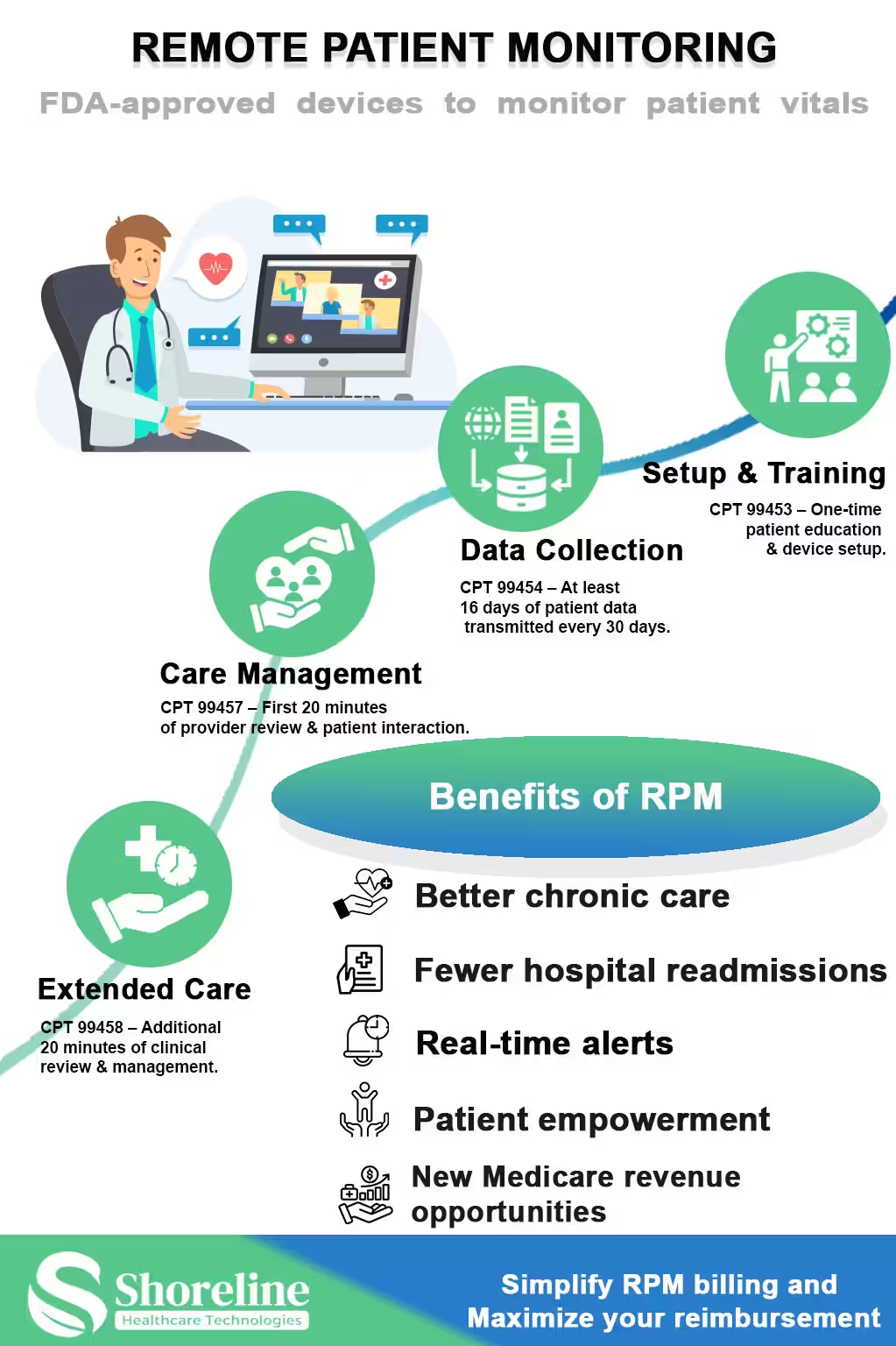
The CPT codes associated with RPM
99453: Used for the initial setup of the RPM device and patient education. It is billable once per episode of care. It requires 16 days of data collection for an initial claim to be submitted.
99454: Used for the monthly supply of devices and daily data transmission. Monthly device supply and daily data transmission. It is billable once per 30 days and requires a minimum of 16 days of data transmission within the 30-day period.
99457: Used for the first 20 minutes of treatment management services per calendar month. It requires 20 minutes of interactive communication with the patient.
99458: Used for each additional 20 minutes of treatment management services. It is used as an Add-on code to 99457.
99091: Used for the collection and interpretation of physiological data, requiring a minimum of 30 minutes of time per 30 days. This cannot be billed with 99457 in the same month.
Furthermore, RPM services can also be billed along with other care management services, like Chronic Care Management (CCM), Transitional Care Management (TCM), and Behavioral Health Integration (BHI), as long as time and effort are not double-counted.
Getting the reimbursements
Successful reimbursement goes beyond knowing the codes. It requires a streamlined billing process with accurate documentation. We at Shoreline Healthcare Technologies helps providers to get through this entire cycle with ease without affecting the day-to-day operations and revenue flow.
- Accurate Documentation: Log every minute of clinical time and every patient interaction. Note what was discussed and what actions were taken based on the health data.
- Verify Insurance: Each payer and health insurance plans may have different rules. Always verify the coverage details before offering services.
- Timely Submissions: Bill for services within the correct billing cycle to ensure a healthy revenue stream.
The complexities of RPM billing can be a significant barrier for many practices. A full-service RPM partner like Shoreline Healthcare Technologies offers comprehensive solutions that not only provide the technology but also manage the intricate billing and compliance requirements, ensuring you get reimbursed correctly and on time.
FAQs
Q1. What all devices can be used for remote patient monitoring?
+Devices like blood pressure cuffs, pulse oximeters, weight scales, and glucometers that meets the definition of medical devices by FDA can be used for monitoring.
Q2. Is remote patient monitoring service secure and HIPAA compliant?
+Yes. RPM platforms use robust data encryption and access controls to protect sensitive patient information. Providers and vendors also follow full compliance with all HIPAA regulations.
Q3. How much cost should the patient bear for a RPM set-up?
+The cost that patient bears vary depending on their health insurance coverage and the specific program. Though many health plans, like Medicare, cover the cost of RPM services and device setup, which significantly reduces the out-of-pocket expenses for the patient
Q4. What is the difference between RPM and Chronic Care Management (CCM)?
+RPM means using digital devices to collect specific, remote physiological data. Whereas Chronic Care Management (CCM) is providing broader services like care coordination and management of two or more chronic conditions. Both the two services are distinct and can be billed concurrently to provide a more comprehensive care model.
Q5. Is ShorelineMB the same as Shoreline Healthcare Technologies?
+Yes, ShorelineMB.com is the official website of Shoreline Healthcare Technologies, a leading provider of medical billing and RCM services.
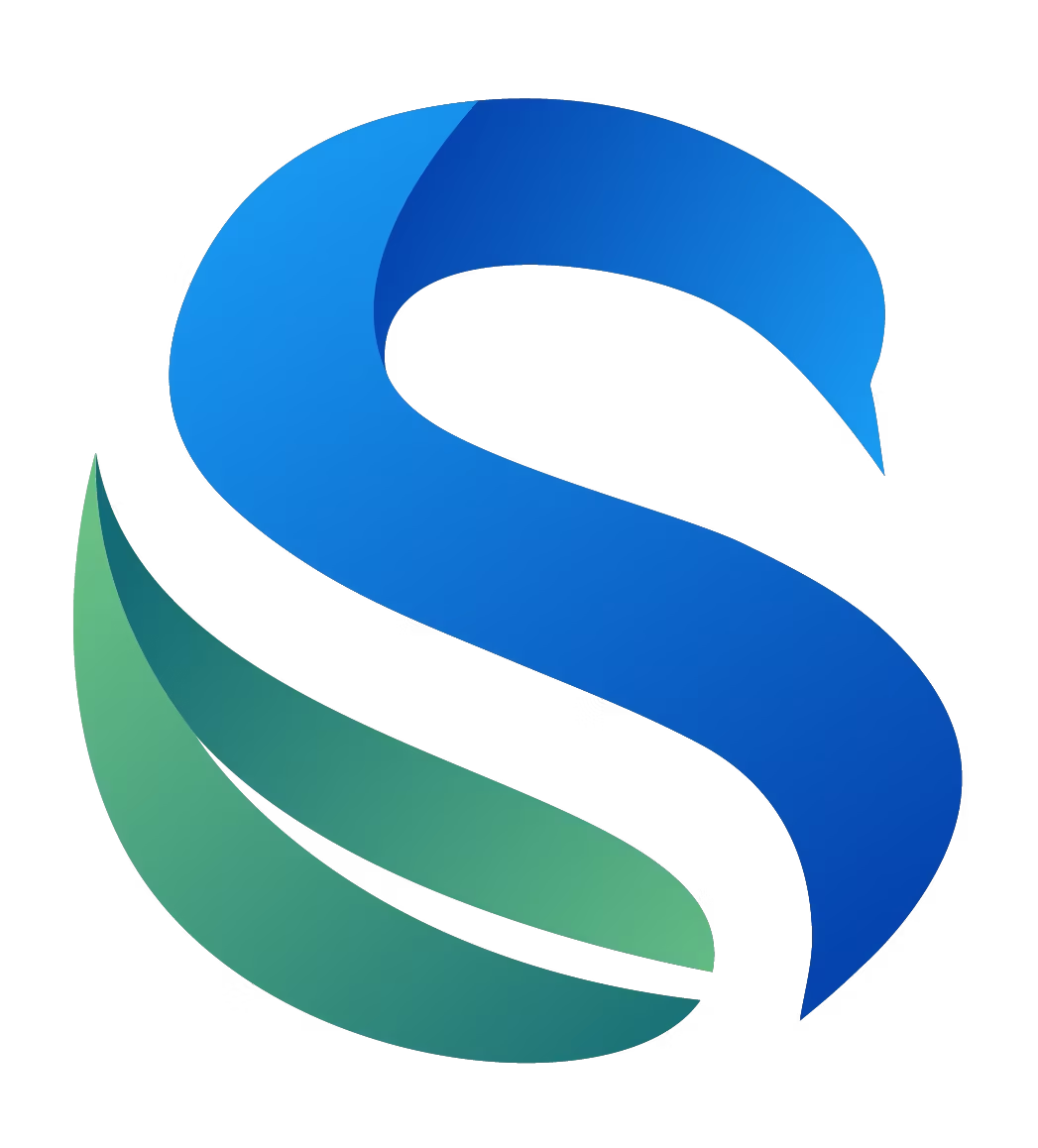








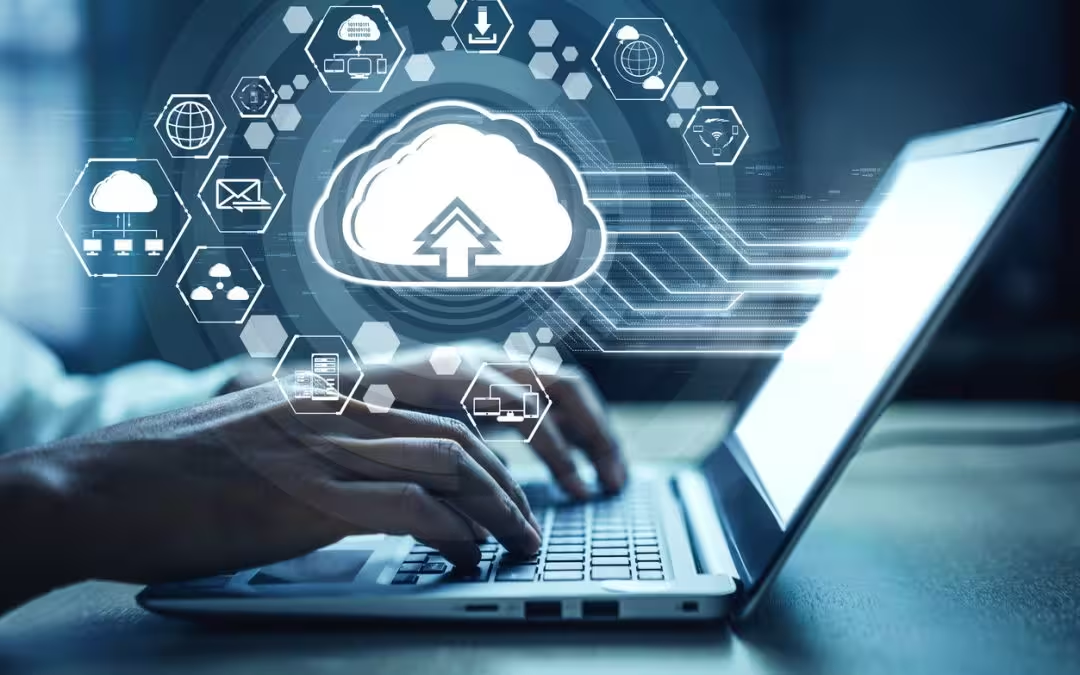
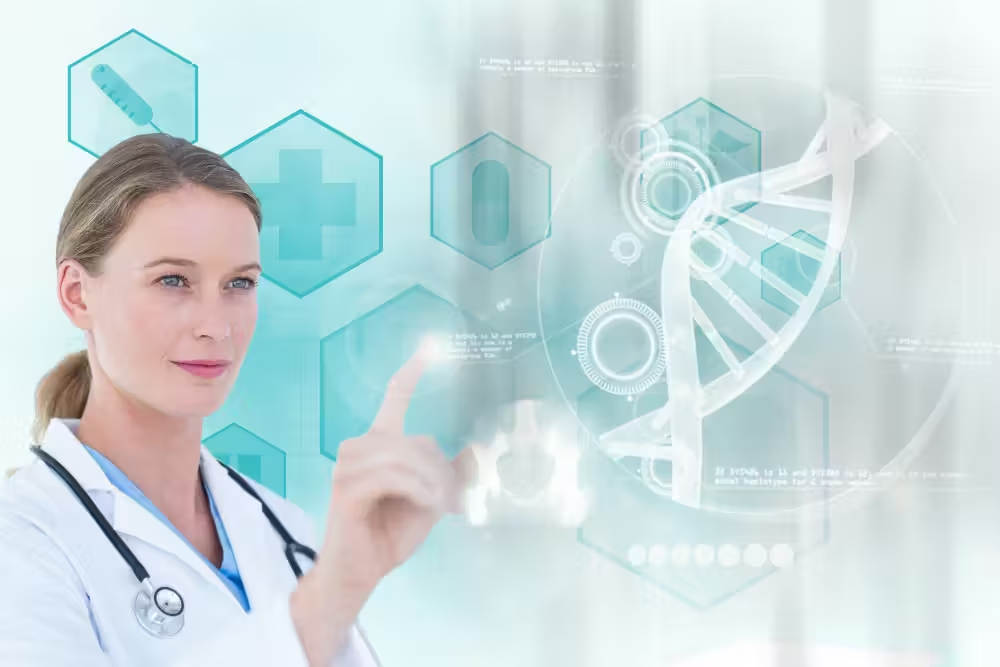



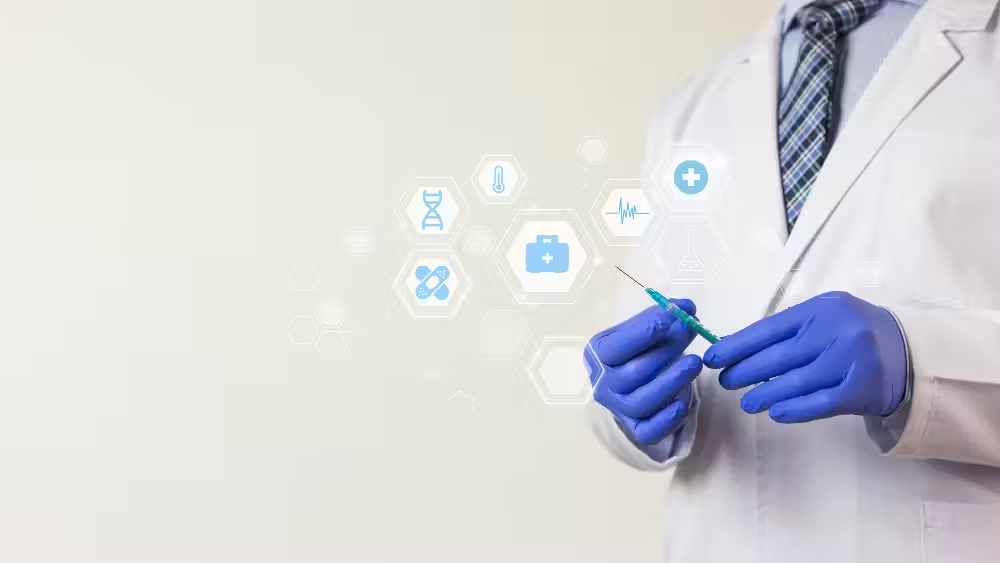
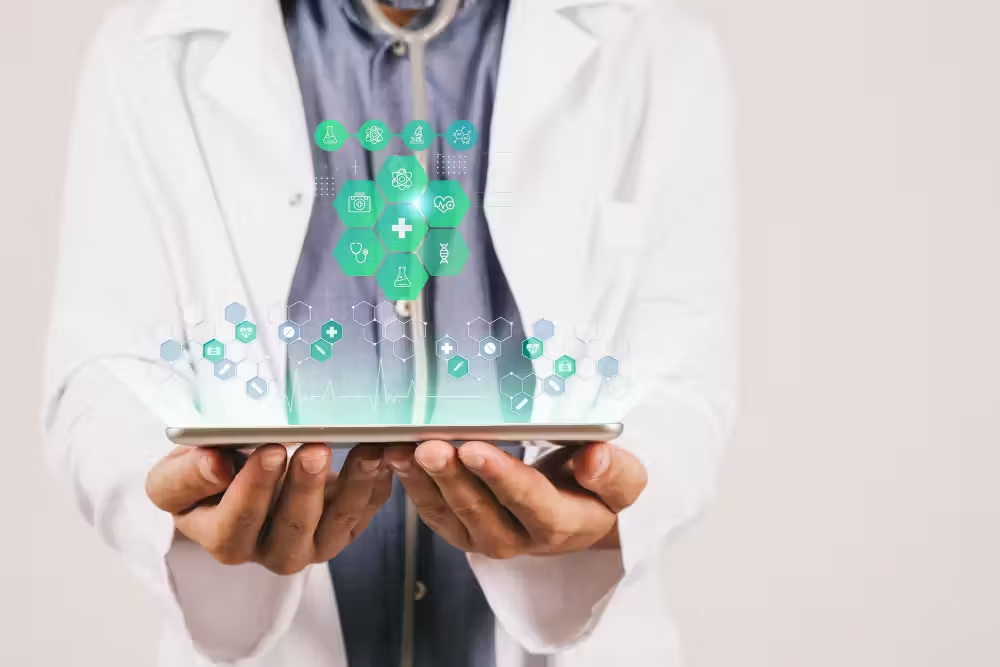
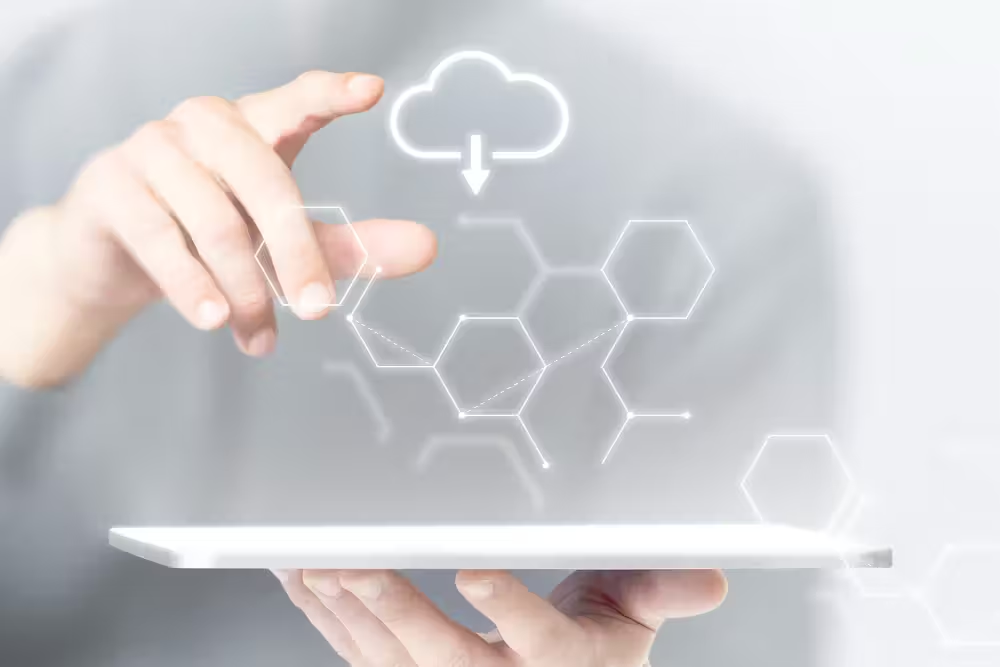
Contact Shoreline Healthcare Technologies today to take the right step toward a more efficient, patient-centered future that can transform your practice.